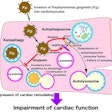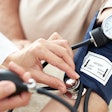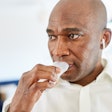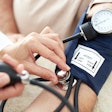
While the use of propofol is common in dentistry, researchers are fine-tuning ways of using it effectively. Proper sedation and patient comfort can depend on fairly large doses of propofol when it is used by itself. While a quick patient recovery after administration has ceased is desirable, there are several risks with the use of the drug in these instances. Respiratory compromise and a decrease in arterial blood pressure can occur.
Japanese researchers from the Osaka University Graduate School of Dentistry have explored how to avoid patient hypotension when using propofol in a prospective randomized study published in Oral Surgery, Oral Medicine, Oral Pathology and Oral Radiology (August 2014, Vol. 118:2, pp. 166-173). They present a solution that is widely available to dentists and has the added benefit of slightly mitigating the effect of propofol shortages: They administered propofol intravenously while simultaneously administering nitrous oxide. The study authors found little research that explored the hemodynamic and autonomic effect of this combination, but their own work produced data that could be useful in dentistry.
"Our results indicate that nitrous oxide attenuates the hypotensive effect during propofol sedation by reduction in the propofol requirement and inhibition of the decrease in sympathetic activity induced by propofol," they wrote. "We believe that [the] addition of nitrous oxide to propofol is a useful way of avoiding hypotension."
Previous studies demonstrated that combinations of propofol with fentanyl and midazolam resulted in a "profound reduction of blood pressure," the researchers noted. And even a small amount of midazolam and meperidine can lead to a drop in blood pressure when combined with propofol, which suggests that opioids or benzodiazepines are poor candidates for mitigating the hypotensive effect of propofol.
Nitrous oxide inhalation has long been established as a safe means of sedation in dentistry. After reviewing data from previous studies, the researchers believed that nitrous oxide's sympathomimetic effect could result in stable hemodynamics by limiting propofol's sympathoinhibitory effect. They set out to explore the possibility that intravenous propofol sedation combined with nitrous oxide inhalation could lead to better sedation while avoiding patient hypotension.
The study included 26 healthy volunteers between the ages of 29 and 42 who underwent sedation. They did not drink alcohol or caffeine in the 24 hours before the procedure and did not eat or drink for four hours before it began. Each subject was sedated at the same time of day. Half were randomly selected for the experimental group, which received propofol via a forearm catheter and nitrous oxide via a face mask that was titrated to 10% and increased by 5% increments every six minutes until the maximum concentration of 20% was reached. The researchers noted that a nasal mask is typically employed in a dental setting. The remaining 13 participants were placed in the control group and received propofol intravenously but only oxygen through the face mask.
The researchers monitored the participants' continuous electrocardiogram (ECG), intermittent automated noninvasive blood pressure, heart rate, and arterial oxygen saturation, and they continuously measured respiratory rate and concentrations of endtidal carbon dioxide and nitrous oxide with mass spectrometry. They also gauged the level of sedation with a bispectral index sensor probe placed on the subject's forehead and evaluated the patient's response on the Observer's Assessment of Alertness/Sedation (OAA/S) scale.
After taking baseline measurements when the subjects were supine for 30 minutes, the researchers took measurements again at six minutes during 10% nitrous oxide inhalation, 12 minutes during 15% nitrous oxide inhalation, and 30 minutes during 20% nitrous oxide inhalation. The control group was monitored on the same schedule.
In their statistical analysis, the researchers observed a decrease in mean arterial pressure in both groups at the 12- and 30-minute marks. However, they found a greater reduction in the propofol group than in the experimental group (64.7 ± 5.3 versus 69.2 ± 4.1 mm Hg) at the third measurement. They also found statistically significant differences in the systolic blood pressure between the two groups: It decreased in the propofol group, but remained unchanged throughout the procedure in the propofol plus nitrous oxide group.
Lastly, the researchers noted a statistically significant difference in the OAA/S scale between groups, with lower scores achieved in the experimental set. They found no statistically significant differences in patient responses to the two sedation methods in regard to the other measurements the researchers took.
They wrote that an important limitation to their study was that they did not measure recovery time from sedation, but since propofol and nitrous oxide are characterized by rapid recovery, the combined technique is unlikely to be associated with a prolonged recovery time, they noted. Another limitation was the study did not include actual dental procedures being performed on the participants. "The impact of dental procedures on the patients' comfort and cooperation and on hemodynamic parameters under this sedative combination should be explored," the researchers wrote.
"The major finding of this study is that nitrous oxide added to propofol produces a deeper level of sedation and a smaller suppression of blood pressure than propofol alone," they concluded.



















